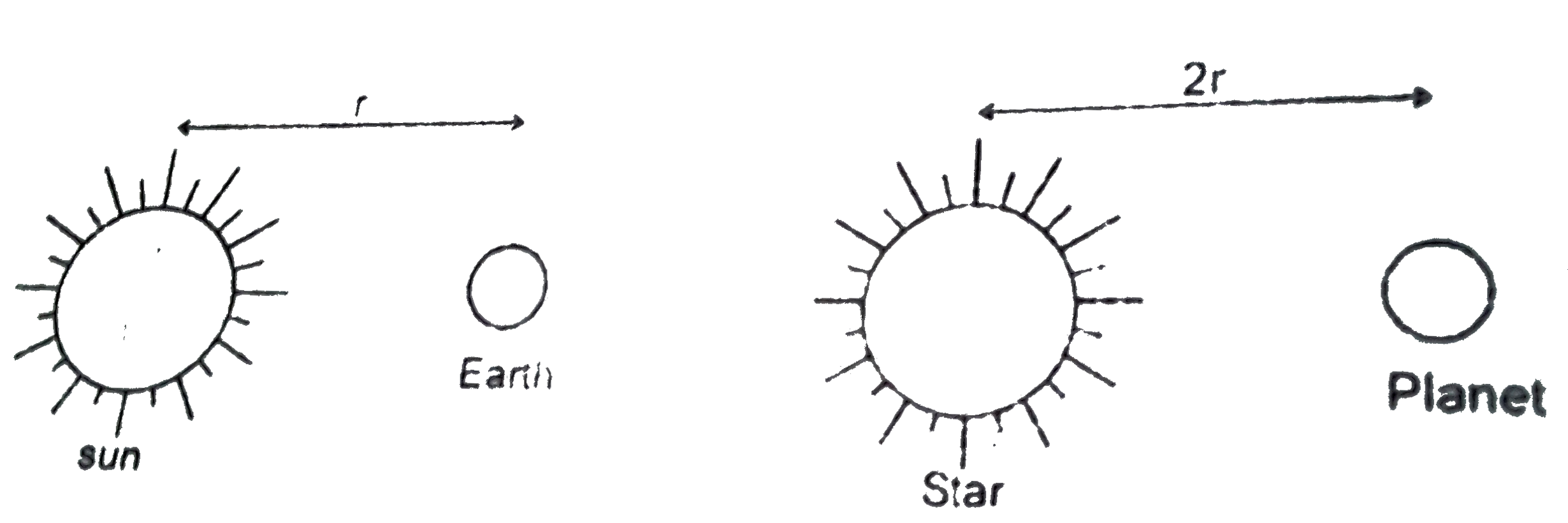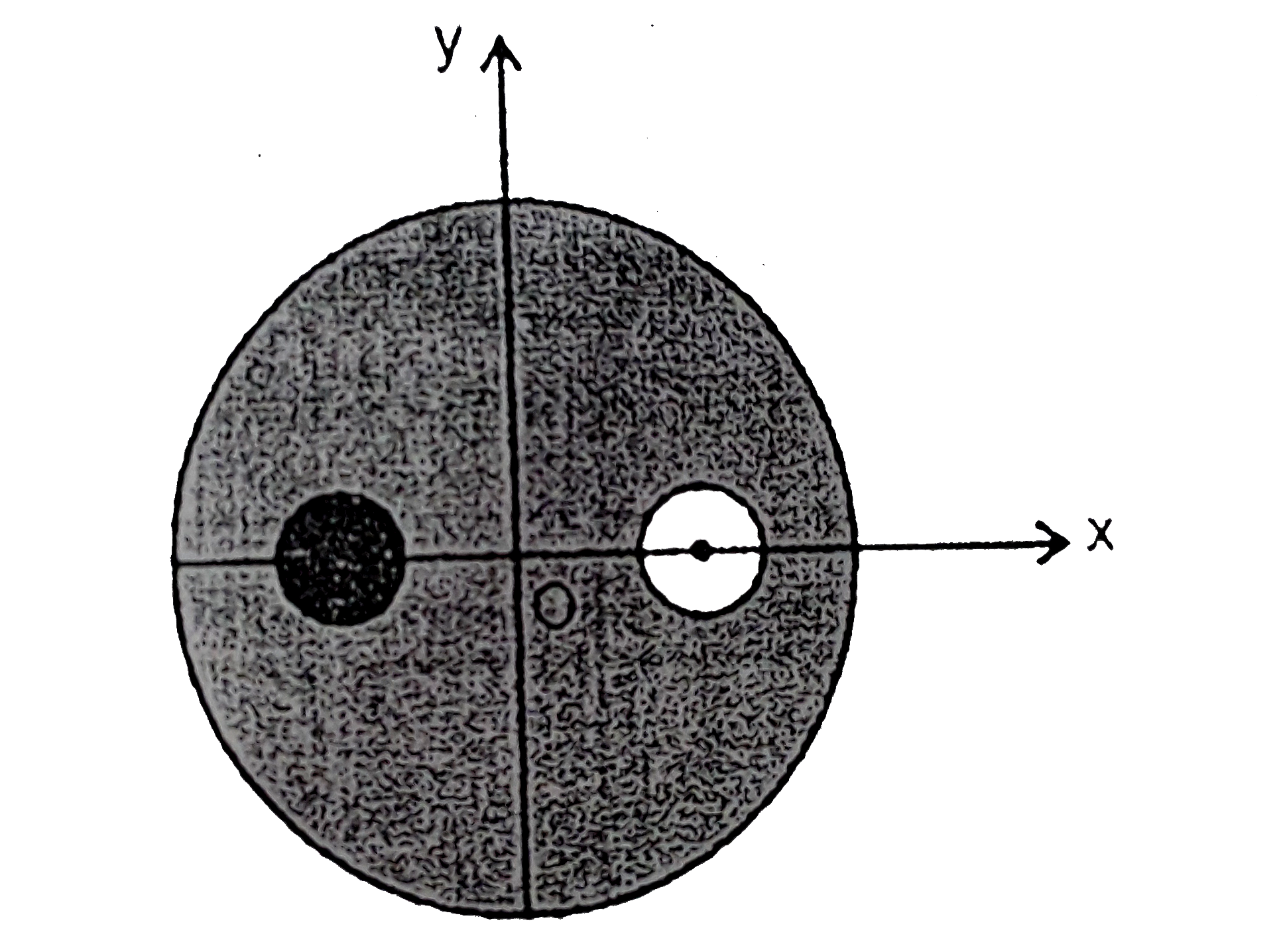Scientists are working hard to develop nuclear fusion reactor. Nuclei of heavy hydrogen , .21H, known as deuteron and denoted by D, cab be throught of as a candidate for fusion reactor, The D-D reaction .21H+21H→32He+n+ energy. In the core of fusion reactor, a gas of heavy hydrogen is fully ionized into deuteron nuclei and electrons. This collector of .21H nuclei and electrons is known as plasma. The nuclei move randomly in the reactor core and occasionally come close enough for nuclear fusion to take place Usually the temperatures in the reactor core are too high and no material wall can be used to confine the plasma. Special techniques are used which confine the plasma for a time t0 before the particles fly away from the core. If n is the density (number/volume) of deuterons, the product nt0 is called Lawson number. one of criteria, a reactor is termed successful it Lawson number is greater than 5×1014s/cm3
It may be helpful to use to following : Boltzman constant k=8.6×10−5wV/K,e24πε0=1.44×10−9eVm.
In the core of nuclear fusion reactor, the gas becomes plasma because of
deuteron density =2.0×1012cm−3, confinement time =5.0×10−3s
deuteron density =8.0×1014cm−3, confinement time =9.0×10−1s
deuteron density =4.0×1023cm−3, confinement time =1.0×10−11s
deuteron density =1.0×1024cm−3, confinement time =4.0×10−12s
The correct Answer is:B
nt0>5×1014s/cm3
for deuteron density =8.0×1014cm−3m, confinement time =9.0×10−1s
nt0=7.2×1014s/cm3
Topper's Solved these Questions
- NUCLEAR PHYSICSBook:RESONANCE ENGLISHChapter:NUCLEAR PHYSICSExercise:Exercise-3 Part-II JEE (MAIN)
Explore 19 Videos
- NUCLEAR PHYSICSBook:RESONANCE ENGLISHChapter:NUCLEAR PHYSICSExercise:Exercise -3 Part-III CBSE PROBLEMS (LAST 10 YEARS)
Explore 34 Videos
- NUCLEAR PHYSICSBook:RESONANCE ENGLISHChapter:NUCLEAR PHYSICSExercise:Exercise-2 Part-4 Comprehension
Explore 6 Videos
- GRAVITATIONBook:RESONANCE ENGLISHChapter:GRAVITATIONExercise:HIGH LEVEL PROBLEMS
Explore 16 Videos
- REVISION DPPBook:RESONANCE ENGLISHChapter:REVISION DPPExercise:All Questions
Explore 463 Videos
Similar Questions
Starting with a sample of pure 66Cu,78 of it decays into Zn in 15 min. The corresponding half-life is
View SolutionWhen a deuteron of mass 2.0141 a.m.u and negligible K.E. is absorbed by a Lithium (.3Li6) nucleus of mass 6.0155 a.m.u. the compound nucleus disintegration spontaneously into two alpha particles, each of mass 4.0026 a.m.u. Calculate the energy carried by each α particle.
View SolutionThe radionuclide .56Mn is being produced in a cyclontron at a constant rate P by bombarding a manganese target with deutrons. .56Mn has a half-life of 2.5h and the target contains large numbers of only the stable manganese isotopes .56Mn. The reaction that produces .56Mn is
.56Mn+d→.56Mn+p
After being bombarded for a long time, the activity of .56Mn becomes constant, equal to 13.86×1010s−1. (Use 1n2=0.693, Avagardo number =6×102, atomic weight of .56Mn=56gmol−1).
At what constant rate P, .56Mn nuclei are being produced in the cyclontron during the bombardment?
View SolutionLet a star be much brighter than our sun but its mass is same as that of sun If our earth has average lift span of man as 70years In the earth like planet of this star system having double the distance from our star find the average lift span of a man on this planet in terms of our year
 .
.
View SolutionConsider a solid sphere of density ρ and radius 4R. Centre of the sphere is at origin. Two spherical cavities centred at (2R,0) and (−2R,0) are created in sphere. Radii of both cavities is R. In left cavity material of density 2ρ is filled while second cavity is kept empty. What is gravitational field at origin.

View SolutionScienists are working hard to develop inclear fusion reactor Nocies of heavy hydrogen, _(1)^(2)H , known as deuteron and denoted by D , can be thought of as a candidate for fusion rector . The D-D reaction is _(1)^(2) H + _(1)^(2) H rarr _(2)^(1) He + n+ energy in the core of fasion reactor a gas of heavy hydrogen of _(1)^(2) H nucles and electrons is know as plasma . The nuclei move randonity in the reactor to take place Unally , the temperature in the reactor core are too ligh and to natrual will can be used to confine the to pleama for a time l_(0) before the particles by away from the case if n is the denasity (number volume ) of determines , the product nt_(0) is called Lavson number in one of the criteria , a reactor is termed successful if Lawson number is greater then 5 xx 10^(14) s//cm^(2) it may be helpfull to use the following botczmann constant lambda = 8.6 xx 10^(-5)eV//k, (e^(2))/(4 pi s_(0)) = 1.44 xx 10^(-9) eVm in the cure of nucleus fusion reactor , the gas become plasma because of
View SolutionScienists are working hard to develop inclear fusion reactor Nocies of heavy hydrogen, _(1)2H , known as deuteron and denoted by D, can be thought of as a candidate for fusion rector . The D−D reaction is _(1)2H+21H→12He+n+e≠rgy in the core of fasion reactor a gas of heavy hydrogen of _(1)2H nucles and electrons is know as plasma . The nuclei move randonity in the reactor to take place Unally , the temperature in the reactor core are too ligh and to natrual will can be used to confine the to pleama for a time l_(0) before the particles by away from the case if n is the denasity (number volume ) of determines , the productnt0is called Lavson number in one of the criteria , a reactor is termed successful if Lawson number is greater then 5×1014s/cm2
it may be helpfull to use the following botczmann constant
λ=8.6×10−5eV/k,e24πs0=1.44×10−9eVm
Result of calulations for fopur different desine of a fasion reactor using D−D reaction are given below which of these is most promising based on Lawson crierion ?
View SolutionAssuming that about 20 M eV of energy is released per fusion reaction ._(1)H^(2)+._(1)H^(3)rarr._(0)n^(1)+._(2)He^(4) , the mass of ._(1)H^(2) consumed per day in a future fusion reactor of powder 1 MW would be approximately
View SolutionThe equation of a nuclear fusion : 2 deuteron → X +1 neutron
What is the atomic number of X ? (deuteron is the nucleus of deuterium or heavy hydrogen )
View SolutionInside the core of nuclear fusion reactor, eventually the gas changes to plasma. It is due to
View SolutionMatch IV {:("1. Uncontrolled fission reaction", "(a) Hydrogen Bomb"), ("2. Fertile material", "(b) Nuclear reactor"), (3. "Controlled fission reaction", "(c) Breeder reactor"),(4. "Fusion reaction" , "(d)Atom bomb"):}
View SolutionIn the core of nuclear fusion reactor, the gas becomes plasma because of
View SolutionScientists are working hard to develop nuclear fusion reactors. Heavy hydrogen nucleus ""_(1)^(2)H, What is called Dutron and denoted by D can be thought of as a possibility for a fusion-reactor. DD is the reaction, ""_(1)^(2)H+""_(1)^(2)Hrarr ""_(2)^(3)He+n+ Energy | Fusion - Heavy hydrogen gas in the reactor's core is completely ionized in deutron nuclei and electrons. In ""_(1)^(2)H The group of nuclei and electrons is called plasma. The nuclei in the reactor core move at random and are sometimes so close as to allow nuclear fusion. Generally, the temperature in the reactor core is very high and due to this the wall of any material is not able to contain this plasma within itself. Therefore, using special techniques, this plasma is limited for some time before the particles move away from the core. If the density of n dutrons ("संख्या//आयतन") Be and t_(0) If time is limited nt_(0) Is called Lawson Number. Lawson number values for a reactor to succeed according to a standard 5xx10^(14)s//cm^(3) Should be greater than Use of the constants given below may be useful for you. Voltsman constant k=8.6xx10^(-5)eV//K, (e^(2))/(4pi epsilon_(0))=1.44xx10^(-9)eVm . Plasma formed from gas in nuclear fusion-reactor core
View Solutionअभिकथन: हीलियम नाभिकों में हाइड्रोजन नाभिकों का संलयन सभी तारों की ऊर्जा का स्रोत होता है।
तर्क: संलयन में भारी नाभिक टूटकर हल्के नाभिक बनाते हैं।
View Solutionवैज्ञानिक कड़ी मेहनत से नाभिकीय संलयन रिएक्टर विकसित करने में लगे है। भारी हाइड्रोजन नाभिक 21H, जिसे पॅट्रॉन कहते है और D से दर्शाते है। संलयन रिएक्टर के लिये संभावना के रूप में प्रयोग किया जा सकता है। D - D अभिक्रिया है: 21H+21H→32He+n+ ऊर्जा, संलयन रिएक्टर के कोर में भारी हाइड्रोजन गैस, ड्यूट्रॉन नाभिको और इलेक्ट्रॉनों में पूर्णतया आयनित हो जाती है। इन 21H नाभिको और इलेक्ट्रॉनों के समूह को प्लाज्मा कहते है। रिएक्टर कोर में नाभिकीय संलयन हो सके। सामान्यता, रिएक्टर कोर में तापमान बहुत बहुत अधिक होता है और इस कारण किसी भी पदार्थ की दीवार इस प्लाज्मा को अपने अन्दर परिसीमित रखने में सक्षम नहीं हो पाती है। इसलिये विशेषज्ञ तकनीको का प्रयोग करके इस प्लाज्मा को कुछ समय तक परिसीमित किया जाता है। इससे पहले कि कण कोर से दूर चले जायें। यदि n ड्यूट्रॉनों का घनत्व (संख्या/आयतन) हो तथा t0 परिसीमन समय हो, तो nt0 को लासन नम्बर (Lawson number) कहते है।
यदि मानक के अनुसार किसी रिएक्टर को सफल करने के लिये लासन नम्बर का मान 5×1014s/cm3 से अधिक होना चाहिये। नीचे दिये गये स्थिरांको का प्रयोग आपके लिये उपयोगी हो सकता है।
वोल्ट्समान नियतांक k=8.6×10−5eV/K,e24πε0=1.44×10−9eVm.
नाभिकीय संलयन-रिएक्टर कोर में गैस से प्लाज्मा बनने का कारण है-
View SolutionAssuming that about 20MeV of energy is released per fusion reaction .1H2+.1H3→.0n1+.2He4, the mass of .1H2 consumed per day in a future fusion reactor of powder 1MW would be approximately
View Solution
